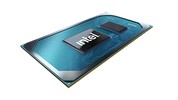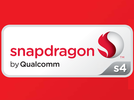Intel Core i3-1125G4 vs Qualcomm Snapdragon S4 Plus MSM8260A
Intel Core i3-1125G4
► remove from comparison
The Intel Core i3-1125G4 is a 28 W quad-core SoC for laptops and Ultrabooks of the Tiger Lake family (UP3) that was introduced in September 2020. It integrates four Willow Cove processor cores (8 threads thanks to Hyper-Threading). Each core can clock from 2 GHz (guaranteed base speed @ 28 W) to 3.7 GHz (single-core boost). All cores at once can clock at up to 3.3 GHz. The faster Core i7 models offer more Level 3 cache (12 versus 8 MB in the i5) and higher clocked cores.
Another novelty is the integrated Xe GPU based on the completely new Gen 12 architecture. In the i3-1125G4 Intel names the GPU UHD Graphics and offers only 48 of the 96 EUs clocked at 400 - 1250 MHz. The GPU and CPU can together use the 8 MB of L3 cache.
Furthermore, Tiger Lake SoCs add PCIe 4 support (four lanes), AI hardware acceleration, and the partial integration of Thunderbolt 4 / USB 4 and Wi-Fi 6 in the chip.
Performance
While we have not tested a single laptop built around the 1125G4 as of October 2023, we expect the chip's multi-thread performance to be 10% to 20% lower than that of the Core i5-1135G7 (4 cores, 8 threads, somewhat higher clock speeds).
Your mileage may vary depending on how high the CPU power limits are and how competent the cooling solution of your system is.
Power consumption
This Core i3 series chip has a default TDP of 12 W to 28 W, the expectation being that laptop makers will go for a higher value in exchange for higher performance. Either way, that's a little too high to allow for passively cooled designs.
The i3-1125G4 is manufactured on Intel's third-gen 10 nm process marketed as SuperFin for average, as of early 2023, energy efficiency.
Qualcomm Snapdragon S4 Plus MSM8260A
► remove from comparison
The Qualcomm MSM8260A (Snapdragon S4 series) is a ARM based high-end smartphone SoC in 2012. It contains two Krait (ARMv7) CPU cores at 1.5 - 1.7 GHz, a Adreno 225 GPU (400 MHz), a LPDDR2 memory controller (up to 500 MHz) and radio elements. The chip is produced in 28nm LP (low power process) at TSMC. Compared to the MSM8960, the 8260A does not support LTE.
The Krait cores offer a slightly better performance as the standard Cortex-A9 cores and are compatible to the NEON SIMD extensions.
| Model | Intel Core i3-1125G4 | Qualcomm Snapdragon S4 Plus MSM8260A | ||||||||||||||||||||||||||||||||||||||||||||||||||||||||||||||||||||||||||||||||||||||||||||||||||||
| Series | Intel Tiger Lake | Qualcomm Snapdragon | ||||||||||||||||||||||||||||||||||||||||||||||||||||||||||||||||||||||||||||||||||||||||||||||||||||
| Codename | Tiger Lake-UP3 | ARMv7 | ||||||||||||||||||||||||||||||||||||||||||||||||||||||||||||||||||||||||||||||||||||||||||||||||||||
| Series: Snapdragon ARMv7 |
|
| ||||||||||||||||||||||||||||||||||||||||||||||||||||||||||||||||||||||||||||||||||||||||||||||||||||
| Clock | 2000 - 3700 MHz | 1700 MHz | ||||||||||||||||||||||||||||||||||||||||||||||||||||||||||||||||||||||||||||||||||||||||||||||||||||
| L1 Cache | 320 KB | 64 KB | ||||||||||||||||||||||||||||||||||||||||||||||||||||||||||||||||||||||||||||||||||||||||||||||||||||
| L2 Cache | 5 MB | 1 MB | ||||||||||||||||||||||||||||||||||||||||||||||||||||||||||||||||||||||||||||||||||||||||||||||||||||
| L3 Cache | 8 MB | |||||||||||||||||||||||||||||||||||||||||||||||||||||||||||||||||||||||||||||||||||||||||||||||||||||
| Cores / Threads | 4 / 8 | 2 / 2 | ||||||||||||||||||||||||||||||||||||||||||||||||||||||||||||||||||||||||||||||||||||||||||||||||||||
| TDP | 28 Watt | |||||||||||||||||||||||||||||||||||||||||||||||||||||||||||||||||||||||||||||||||||||||||||||||||||||
| Technology | 10 nm | 28 nm | ||||||||||||||||||||||||||||||||||||||||||||||||||||||||||||||||||||||||||||||||||||||||||||||||||||
| max. Temp. | 100 °C | |||||||||||||||||||||||||||||||||||||||||||||||||||||||||||||||||||||||||||||||||||||||||||||||||||||
| Socket | BGA1449 | |||||||||||||||||||||||||||||||||||||||||||||||||||||||||||||||||||||||||||||||||||||||||||||||||||||
| Features | DDR4-3200/LPDDR4x-3733 RAM, PCIe 4, 4 GT/s bus, DL Boost, GNA, MMX, SSE, SSE2, SSE3, SSSE3, SSE4.1, SSE4.2, AVX, AVX2, AVX-512, BMI2, ABM, FMA, ADX, VMX, SMX, SMEP, SMAP, EIST, TM1, TM2, Hyper-Threading, Turbo, SST, AES-NI, RDRAND, RDSEED, SHA, TME | HSPA+, EDGE, GSM, GPRS, GPS, WiFi, Bluetooth, NFC, FM | ||||||||||||||||||||||||||||||||||||||||||||||||||||||||||||||||||||||||||||||||||||||||||||||||||||
| iGPU | Intel UHD Graphics Xe G4 48EUs (400 - 1250 MHz) | Qualcomm Adreno 225 (400 MHz) | ||||||||||||||||||||||||||||||||||||||||||||||||||||||||||||||||||||||||||||||||||||||||||||||||||||
| Architecture | x86 | ARM | ||||||||||||||||||||||||||||||||||||||||||||||||||||||||||||||||||||||||||||||||||||||||||||||||||||
| Announced | ||||||||||||||||||||||||||||||||||||||||||||||||||||||||||||||||||||||||||||||||||||||||||||||||||||||
| Manufacturer | ark.intel.com |


 Deutsch
Deutsch English
English Español
Español Français
Français Italiano
Italiano Nederlands
Nederlands Polski
Polski Português
Português Русский
Русский Türkçe
Türkçe Svenska
Svenska Chinese
Chinese Magyar
Magyar
